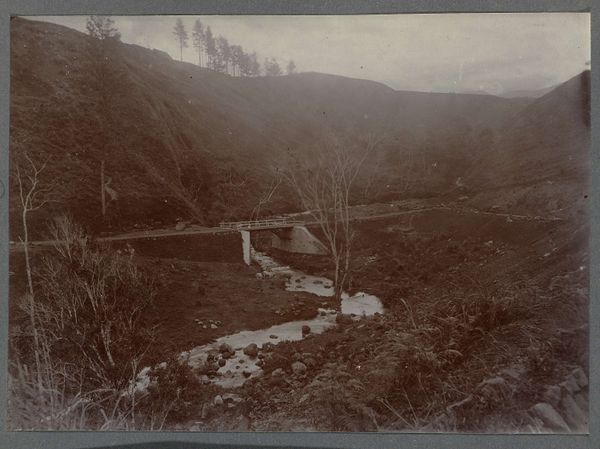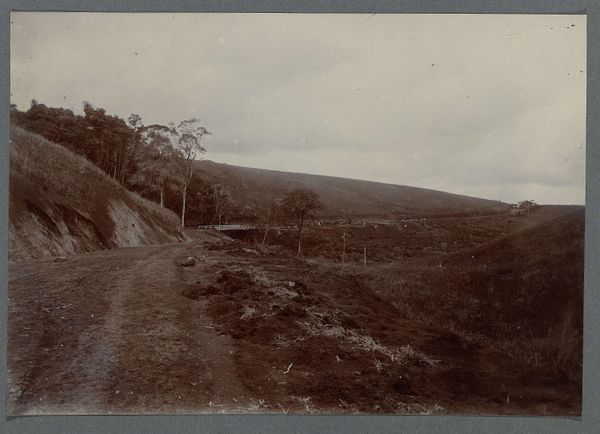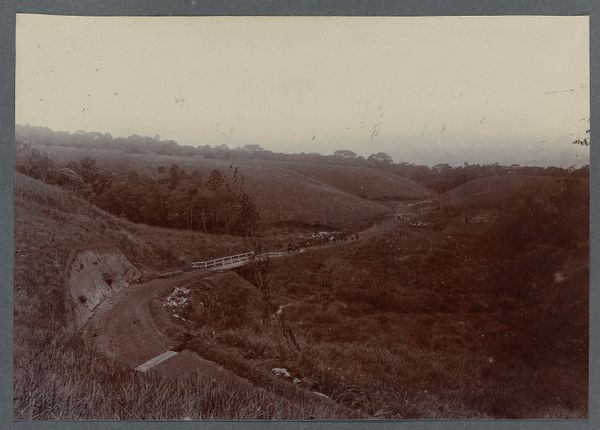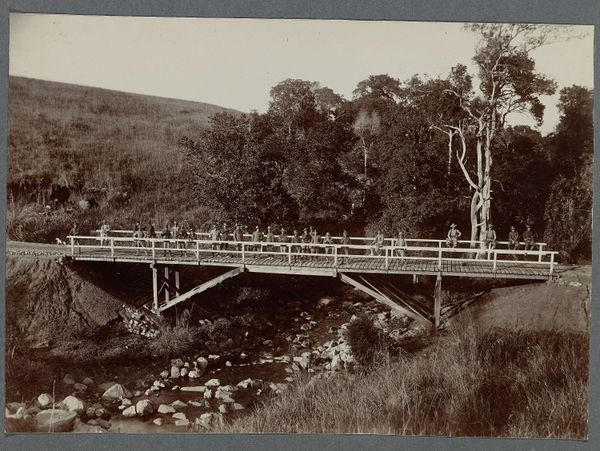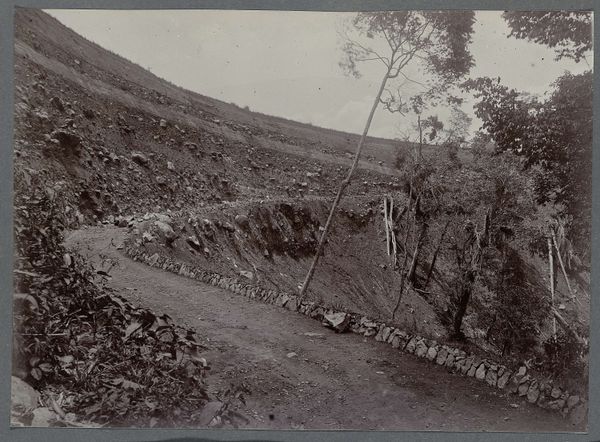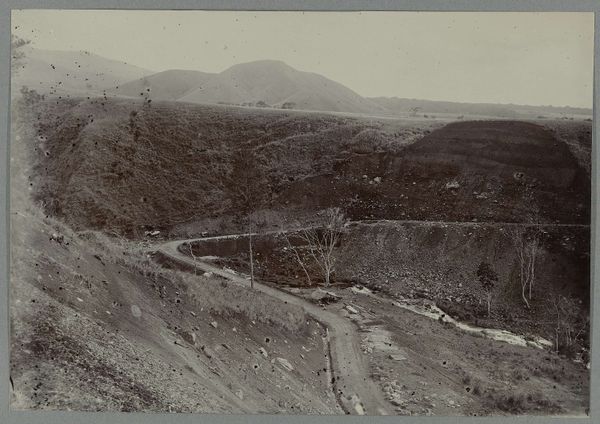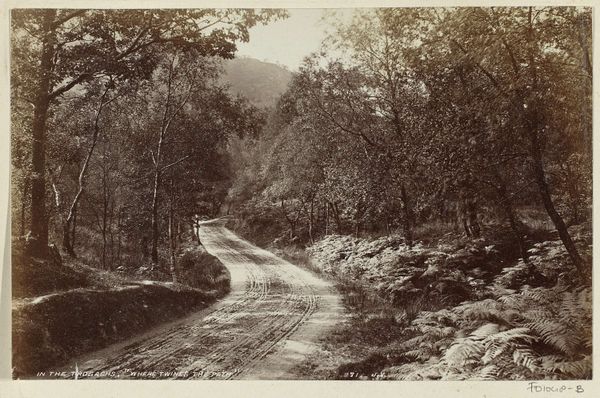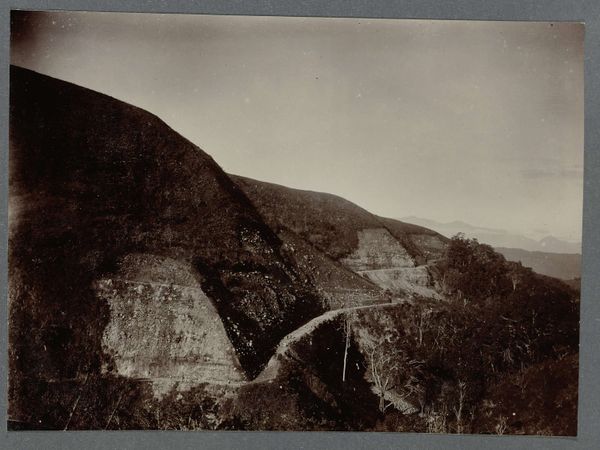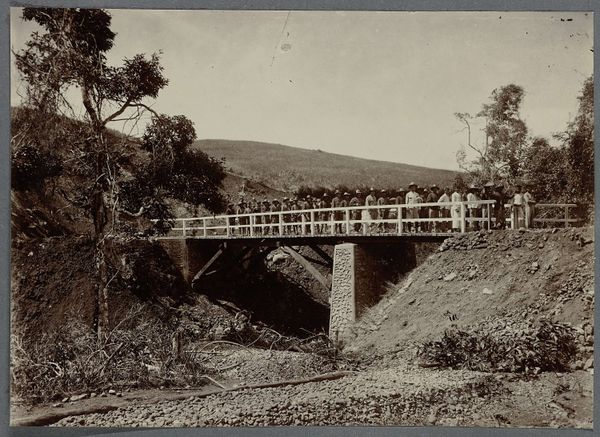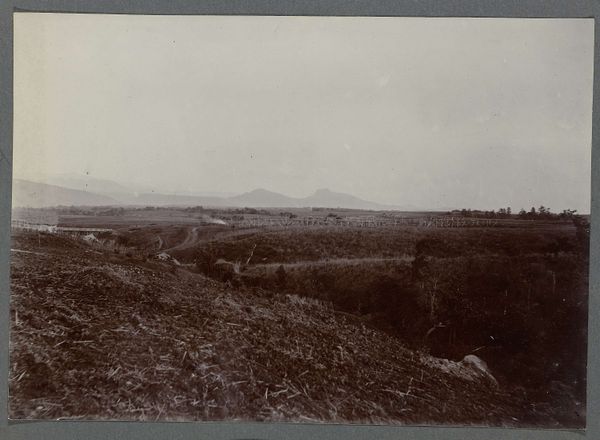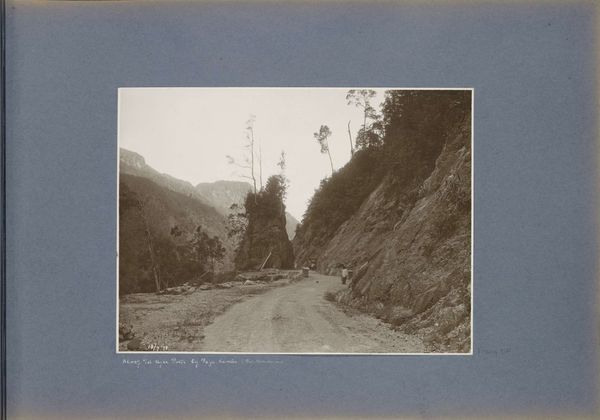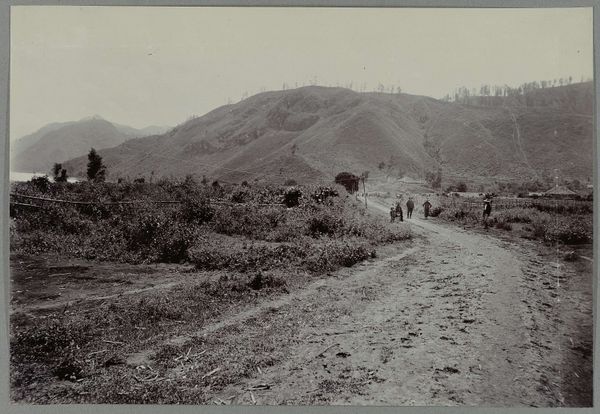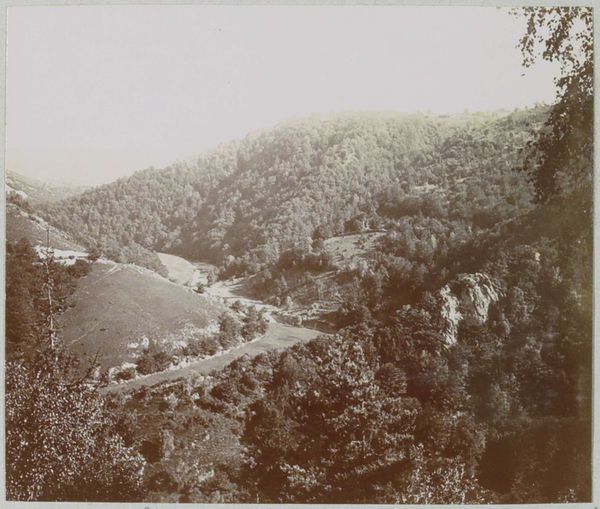
photography
#
pictorialism
#
landscape
#
photography
#
realism
Dimensions: height 138 mm, width 200 mm
Copyright: Rijks Museum: Open Domain
Curator: This photograph, taken sometime between 1903 and 1913, is titled "Brug over de Woih ni Koelos" – which translates to "Bridge over the Woih ni Koelos." The artist is anonymous. It's a stunning example of pictorialist photography, capturing a rural landscape. Editor: My initial impression is one of tranquility, yet with a certain sense of hard labor infused by the image. The monochrome tones soften the hilly environment, creating a sense of timelessness. But look at those figures on the left--and notice the deeply rutted road--it suggests a lot of difficult journeys, both physically and perhaps metaphorically. Curator: Indeed. The dirt path dominates the lower left and really brings forth the theme of work and motion in relation to a fairly permanent and modern construction like a wooden bridge. We must note that the labor implied likely relates to both road-making and land maintenance of colonial infrastructures, although those histories are made obscure by the scenic rendering of the photograph. The Pictorialist style favored by the photographer served to emphasize a specific rendering of Indonesian topography at a historical moment marked by increased contact with Dutch settlers and entrepreneurs. Editor: Absolutely, it reminds me how bridges often serve as more than just physical links; in this instance, the symbolic aspect really dominates my attention, in that it brings up psychological thresholds as represented across many world mythologies and fairytales--not to mention it could also simply denote progress, connection between separate entities or parts--the bridging, if you will, of the divide between different states, or different people even. The eye travels irresistibly toward that central connecting device! Curator: Very astute. Thinking about the historical and social context further enriches that symbolic dimension you point to. It leads us to consider the visual framing in this image, for example, in the context of the broader colonial agenda of the early 20th century--which required resources, personnel, the facilitation of trade across the rugged Indonesian countryside. Editor: This particular anonymous photographer has left us much to contemplate! Both on the literal crossing-over within an Indonesian setting and the figurative transitions and connections it represents on an ideological level as well. Curator: A fine example of how photography documents and constructs specific points in global political and economic expansion, wouldn't you say? The symbolic resonance you astutely observe in its subject amplifies and complicates the reading even further.
Comments
No comments
Be the first to comment and join the conversation on the ultimate creative platform.
